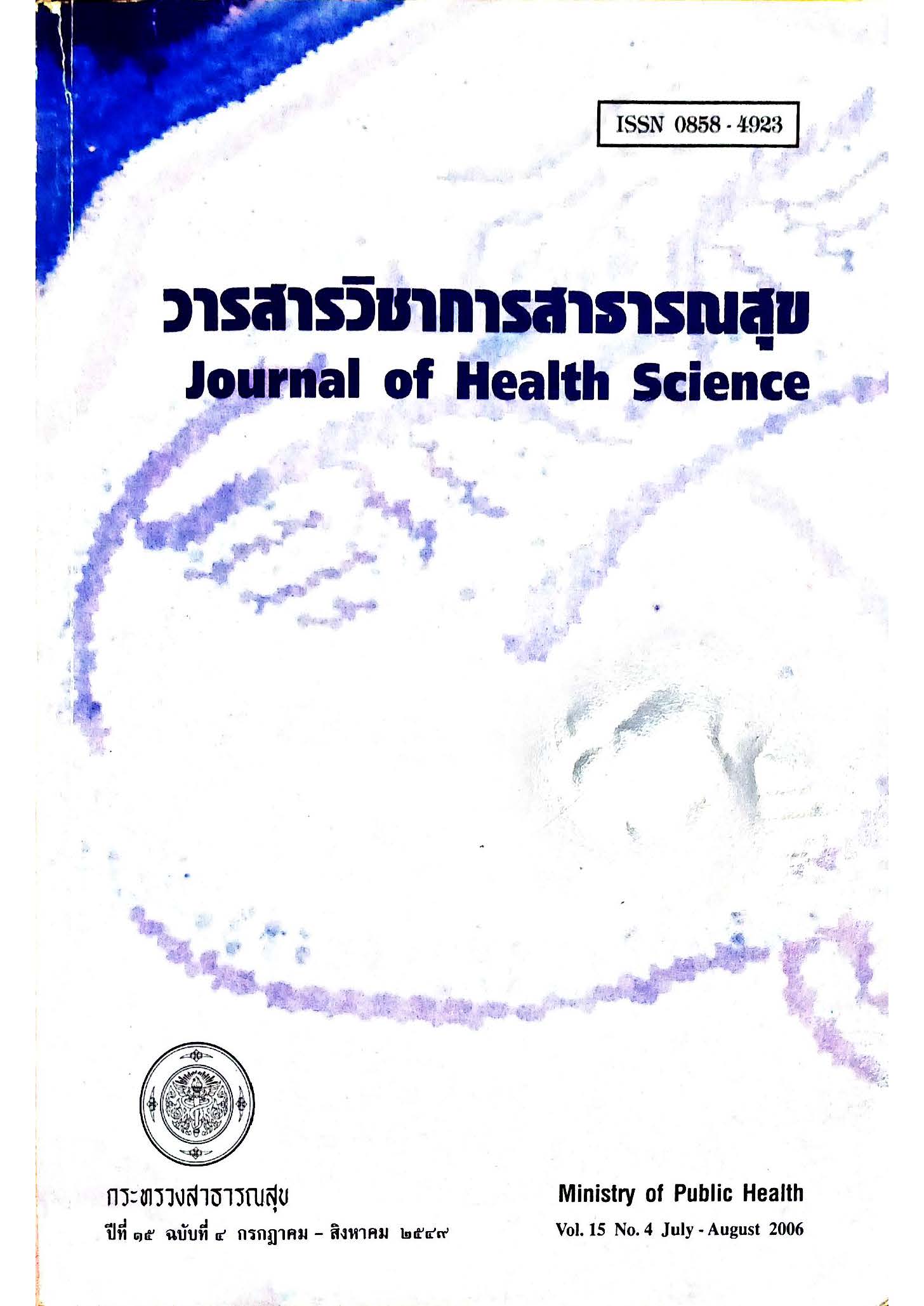Food Safety Situation : Papaya Salad
Abstract
The study of contaminants in somtam, or papaya salad, was conducted during the period April-June 2005. A total of 3,519 samples from 357 food stalls and vendors all over Thailand were collected and investigated. The study was in response to the public concern on safety problems and the launch of a safety training program with an objective of investigating the improvement of somtam safety situation after such training program by comparing the pre- and post-results.
The results showed that 207 samples from 2,743 samples (7.6%) did not comply with the standards, reporting contaminants as follows: coloring in dried shrimps (54.0%), bleaching agent in palm sugar (5.0%), excess of aflatoxin (3.4%), pesticides residues (1.1%), and formalin in shredded papaya and string beans (0.5%). Moreover, microbiology quality examinations showed that 287 out of 776 samples of ready-to-eat somtam (37.0%) were contaminated.
The results indicated that any kind of somtam has a 10.8 percent food poisoning bacteria contamination in average. This is considerably lower than the rate before running the campaign, which was 30 percent. But the highest of food poisoning bacteria contamination, 17.7 percent, was still found in somtam with preserved crab and fish, or Pla-Ra. The proportions of food poisoning bacteria contaminations in each type of somtam premise were comparable. Comparing to the data before running the safety training campaign, 35.5 percent improvement was reported across the board. This clearly shows that health education and health behavior training for somtam handlers and premises owners are very critical, useful and should become even more intensive and continuing once appropriate strategies are adopted in due course.
Downloads
Downloads
Published
How to Cite
Issue
Section
License

This work is licensed under a Creative Commons Attribution-NonCommercial-NoDerivatives 4.0 International License.







